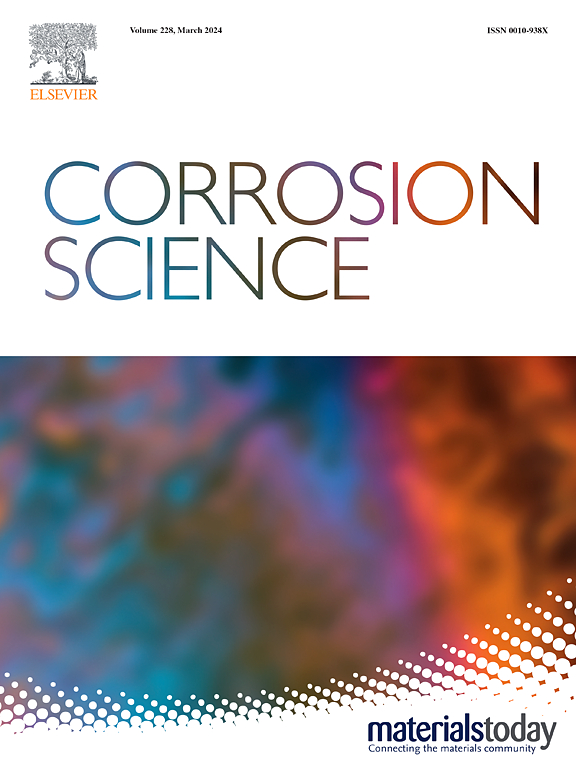Hydrogen embrittlement and hydrogen-dislocation interactions in Ni-Cr alloys
IF 7.4
1区 材料科学
Q1 MATERIALS SCIENCE, MULTIDISCIPLINARY
引用次数: 0
Abstract
The hydrogen embrittlement (HE) of Ni and Ni-Cr alloys, i.e., Ni-1Cr, Ni-5Cr, Ni-10Cr, and Ni-20Cr, was investigated using slow strain rate tensile tests followed by post-mortem characterization via scanning electron microscope (SEM), electron back scatter diffraction (EBSD), and electron channeling contrast imaging (ECCI). The HE susceptibility of Ni-Cr alloys varied nonmonotonically with the increasing amount of Cr, as the highest HE sensitivity was found for the Ni-10Cr alloy. After H-charging, the fracture surface of Ni-Cr alloys changed from fully ductile dimples to brittle features: quasi-cleavage for Ni-20Cr and intergranular for the rest. The influences of hydrogen on the dislocation collective behavior of Ni-Cr alloys were systematically studied. ECCI observations revealed that dislocation cell structures presented in Ni-1Cr, while dislocation slips in a more planar way were found in Ni-10Cr and Ni-20Cr. H does not alter the type of dislocation structures and has no noticeable impact on dislocation structure evolution in Ni-1Cr, Ni-10Cr, and Ni-20Cr alloys.
Ni-Cr合金中的氢脆和氢位错相互作用
采用慢应变速率拉伸试验研究了Ni和Ni- cr合金(即Ni- 1cr、Ni- 5cr、Ni- 10cr和Ni- 20cr)的氢脆(HE),并通过扫描电子显微镜(SEM)、电子背散射衍射(EBSD)和电子通道对比成像(ECCI)进行了事后表征。Ni-Cr合金的HE敏感性随Cr含量的增加呈非单调变化,其中Ni-10Cr合金的HE敏感性最高。充氢后,Ni-Cr合金断口由完全韧性韧窝转变为脆性断口,Ni-20Cr为准解理断口,其余断口为晶间断口。系统研究了氢对Ni-Cr合金位错集体行为的影响。ECCI观察发现,Ni-1Cr中存在位错胞结构,而Ni-10Cr和Ni-20Cr中位错滑移更为平面化。H不改变Ni-1Cr、Ni-10Cr和Ni-20Cr合金中位错组织的类型,对位错组织的演变无明显影响。
本文章由计算机程序翻译,如有差异,请以英文原文为准。
求助全文
约1分钟内获得全文
求助全文
来源期刊

Corrosion Science
工程技术-材料科学:综合
CiteScore
13.60
自引率
18.10%
发文量
763
审稿时长
46 days
期刊介绍:
Corrosion occurrence and its practical control encompass a vast array of scientific knowledge. Corrosion Science endeavors to serve as the conduit for the exchange of ideas, developments, and research across all facets of this field, encompassing both metallic and non-metallic corrosion. The scope of this international journal is broad and inclusive. Published papers span from highly theoretical inquiries to essentially practical applications, covering diverse areas such as high-temperature oxidation, passivity, anodic oxidation, biochemical corrosion, stress corrosion cracking, and corrosion control mechanisms and methodologies.
This journal publishes original papers and critical reviews across the spectrum of pure and applied corrosion, material degradation, and surface science and engineering. It serves as a crucial link connecting metallurgists, materials scientists, and researchers investigating corrosion and degradation phenomena. Join us in advancing knowledge and understanding in the vital field of corrosion science.
 求助内容:
求助内容: 应助结果提醒方式:
应助结果提醒方式:


